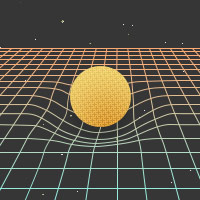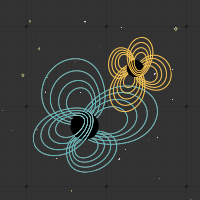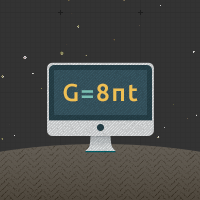F
F
Failure of Simultaneity
Simultaneous events are events in different places which happen at the same time. It turns out that this concept depends on how quickly one is moving. That is, if two observers are moving relative to each other, they will not be able to agree on the simultaneity of events. This is the Failure of Simultaneity.
Fermion
A type of particle with "odd half-integral angular momentum" — a spin of 1/2, 3/2, etc. Spin refers to an intrinsic quality of all particles. Examples of fermions are electrons, neutrons, and protons. The other type of particle is the boson.
First Law of Motion
The first of Newton's Laws of Motion, which says that moving objects move in a straight line. Specifically, the Law says, "An object at rest tends to stay at rest and an object in motion tends to stay in motion with the same speed and in the same direction unless acted upon by an unbalanced force."
Fission
or Nuclear Fission. A physical process which takes a nucleus of a heavy element (like Uranium or Plutonium, for example) and breaks them down into two or more smaller nuclei. This process releases large amounts of energy. It is sometimes called "Splitting the Atom". This is used in many modern power plants to generate electricity by heating water with the energy released. The two or more smaller nuclei which are produced are frequently toxic, and nearly always radioactive, which makes this method of producing electricity controversial. Fission is also the method used in simple nuclear weapons.
Flatness Problem
The unexpected result that the Universe is not expanding so slowly that it will clearly collapse back on itself in a Big Crunch, nor expanding so quickly that it will clearly keep expanding forever. Instead, measurements show that the Universe is treading a fine line between the two — the Universe is referred to as "flat". Astrophysicists would not expect this to be the case unless there were some cause for the Universe to tread such a fine line. Finding this cause is the "flatness problem".
Frequency
The number of occurrences of something in a given period of time. For a wave, this is might be the number of times the wave peaks in one second.
Fusion
or Nuclear Fusion. A physical process which takes light elements and combines them into a heavier element. An example is the fusion of two Hydrogen atoms to form a Helium atom. This is the process which gives stars (including our Sun) heat and energy so that they shine. Though fusion is not yet used to produce electricity, scientists are working on this method, which will provide a nearly-inexhaustible source of cheap electrical energy, with little of the pollution or danger of nuclear fission. Fusion is also the force behind some very powerful nuclear weapons — the "H-Bomb".




